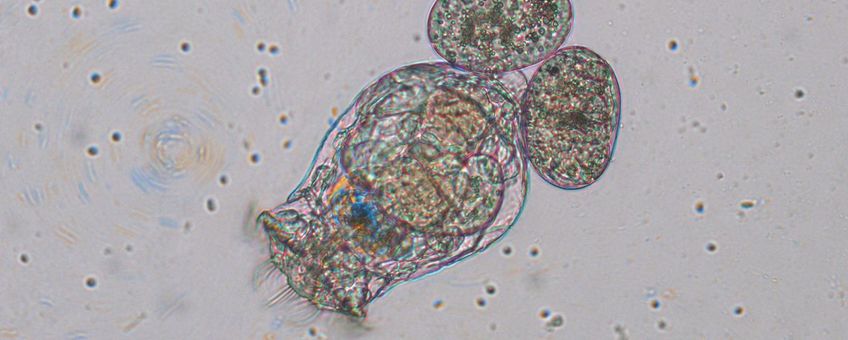
Adapting to heat stress helps against heavy metals
Netherlands Institute of Ecology (NIOO-KNAW)The world holds many forms of stress for animals. Take our freshwater, for example. This is increasingly under pressure from a wide range of man-made stressors, such as climate change and various forms of pollution. How can animals adapt adequately to everything? With a rapidly changing climate, it is crucial to understand the impact this has on other challenges, and vice versa.
Stress + stress = ?
"Some organisms have a remarkable ability to quickly adapt genetically to changing living conditions. This can have surprising consequences," says NIOO's aquatic ecologist Steven Declerck. He led the research done by NIOO, Wageningen University and KU Leuven. "For example, a better ability to cope with one type of stress can influence how sensitive organisms become to other stress factors. Adaptation can lead in some cases to increased tolerance to other stresses, but in other cases to heightened sensitivity."

Copper cost
It is a tiny animal less than a millimetre in size that lives in freshwater: the rotifer. Yet it plays a leading role in this research. In an evolutionary experiment, populations of rotifers lived for several months with either increasing heat or copper amounts. Heat waves are becoming more common due to climate change, and copper can be toxic to freshwater life. Declerck: "Although copper pollution has been reduced in Europe in recent decades, it is still a real threat in many other places around the world. Through industrial and domestic wastewater, mining and pesticides, it ends up in nature."
Experimental evolution
Monitoring stress-driven evolution in the lab in real time, that's what the researchers did. And what are the ecological consequences? The study started with populations that each consisted of 50 different rotifer clones. These clones started reproducing sexually with each other and the populations were found to genetically adapt to either heat or copper within a short time. At the end, the populations were presented with all situations in a so-called common garden experiment. Declerck: "Surprisingly, this showed that populations that adapted to heat became insensitive to copper poisoning, while adaptation to copper did not involve increased tolerance to heat."

Common phenomenon
What can we do with the conclusions? "Our research suggests that periods of high temperatures can render populations more robust to the negative effects of local pollution," explains Declerck. This is good news and probably the result of selection for general stress coping mechanisms. But rotifers that adapt to pollution do not appear to be more resistant to heat, likely because the latter requires more specialised 'detoxification mechanisms' that provide a rather limited protection against other stressors. "It is important for environmental management and conservation to now further investigate if this is a general phenomenon. That means: looking at other combinations of types of stress and organisms."
More information
- Article in Global Change Biology: Asymmetric micro-evolutionary responses in a warming world: heat-driven adaptation enhances metal tolerance in a planktonic rotifer, but not vice versa.
NIOO-KNAWWith more than 200 staff members and students, the Netherlands Institute of Ecology (NIOO-KNAW) is one of the largest research institutes of the Royal Netherlands Academy of Arts and Sciences (KNAW). The institute specialises in water and land ecology with three major themes: biodiversity, climate change and the sustainable use of land and water. Since 2011 NIOO is located in an innovative and sustainable research building in Wageningen, the Netherlands. NIOO has an impressive research history that stretches back 70 years and spans the entire country, and beyond. |
Text: NIOO-KNAW
Images: Suzanne Wiezer, NIOO-KNAW; Steven Declerck, NIOO-KNAW
